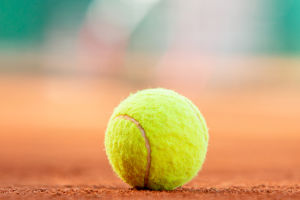Have you ever wondered why the three-point shot has become such a crucial part of basketball? We've all seen how it can change the outcome of a game in just seconds.
Today, we're diving into the evolution of this skill and exploring how we can train smarter to become better shooters ourselves.
The Origins of the Three-Point Shot
The three-point line was officially introduced to professional basketball in the late 1970s, adding a fresh layer of strategy to the game. Initially, players rarely attempted long-range shots because they were considered risky and difficult. But as time passed, players and coaches started to realize the advantage of scoring three points instead of two.
The Rise of the Three-Point Specialist
In the 1980s and 90s, a few players mastered the art of the three-pointer, setting the stage for the modern game. Legends like Larry Bird and Reggie Miller showed that consistent long-range shooting could greatly influence a team's success. As we watch today's NBA, players like Stephen Curry have taken this skill to a whole new level, making the three-pointer a dominant strategy.
Why Has the Three-Point Shot Become So Important?
We've seen teams completely change their play style to focus on three-point shooting. The math is simple: more points per shot. But there's more to it. The three-pointer spreads the defense, opens up the court, and creates space for drives and passes. It's no longer just about making shots; it's about strategic advantage.
Breaking Down the Mechanics of a Perfect Three-Point Shot
When we look at great shooters, some technical details stand out. Proper foot placement, a balanced stance, quick but controlled release, and follow-through are all key. The shooting hand guides the ball, while the other hand supports it until release. Our legs provide power, so strength training combined with repetition helps.
Training Methods to Improve Our Three-Point Shooting
To get better, we must practice with purpose. Here are some tips:
• Consistent shooting drills from different spots beyond the arc
• Working on quick catch-and-shoot techniques
• Simulating game pressure with timed drills or defenders
• Strengthening core and legs to maintain stability
• Tracking progress by recording shooting percentages over time
The Role of Mental Focus and Confidence
Shooting is as much mental as it is physical. We need to stay calm under pressure and trust our training. Visualization techniques and breathing exercises can help us prepare before games. The more confident we feel, the more natural our shot becomes.
How Coaches and Technology Support Training
Today's training also benefits from video analysis and wearable sensors that track shooting form and performance. Coaches use this data to correct mistakes and improve efficiency. As players, we can watch our own footage to understand what needs adjustment.
Three-Point Trends in Youth Basketball
The three-point shot isn't just for pros. Many youth programs now encourage early practice of long-range shooting. This builds foundational skills while helping young players learn court spacing and decision-making.
Final Thoughts: Can We Master the Three-Point Shot?
We've seen how the three-point shot transformed basketball and why it's here to stay. For us players, it's a skill worth investing time in. By focusing on technique, consistent practice, and mental readiness, we can all improve our long-range shooting and enjoy the game more.
Engage with Us
What's your experience with three-point shooting? Do you find it challenging or exciting? Share your thoughts or training tips with us! Together, we can keep learning and growing on the court.


